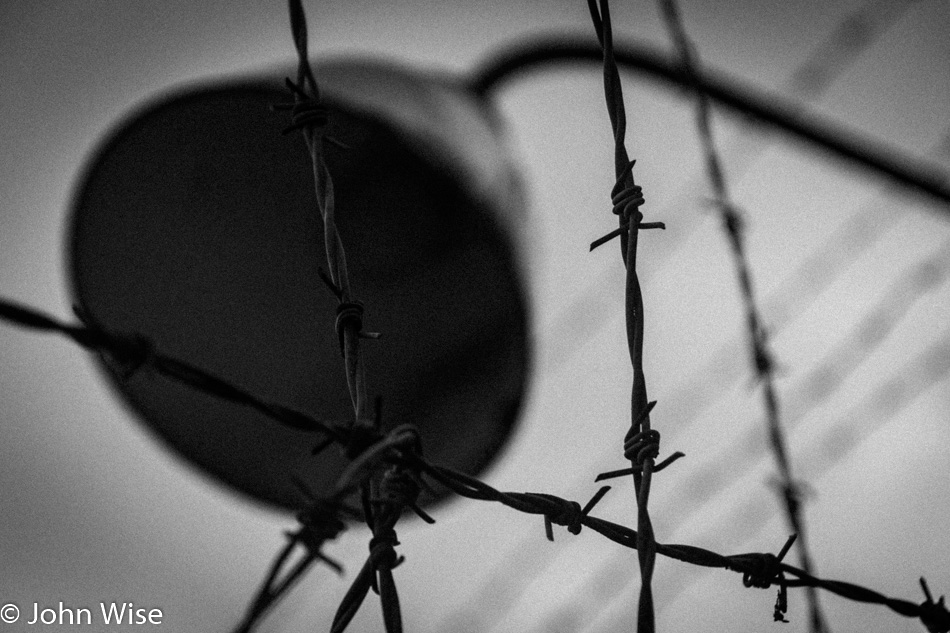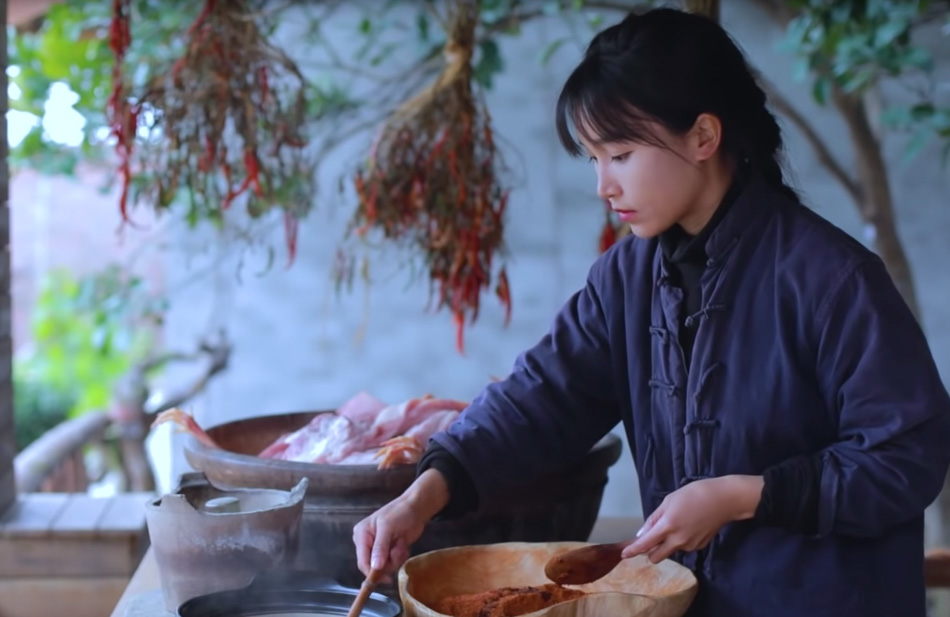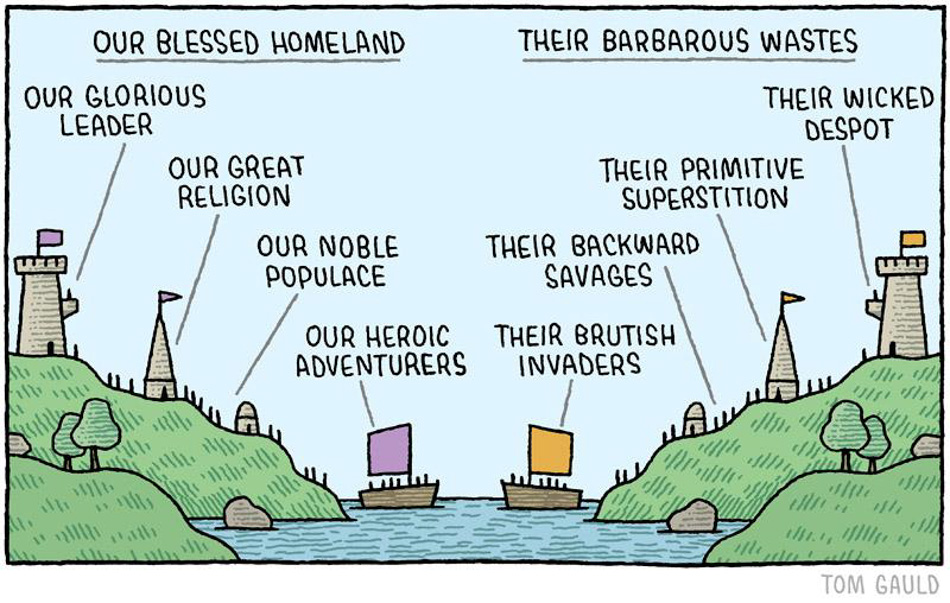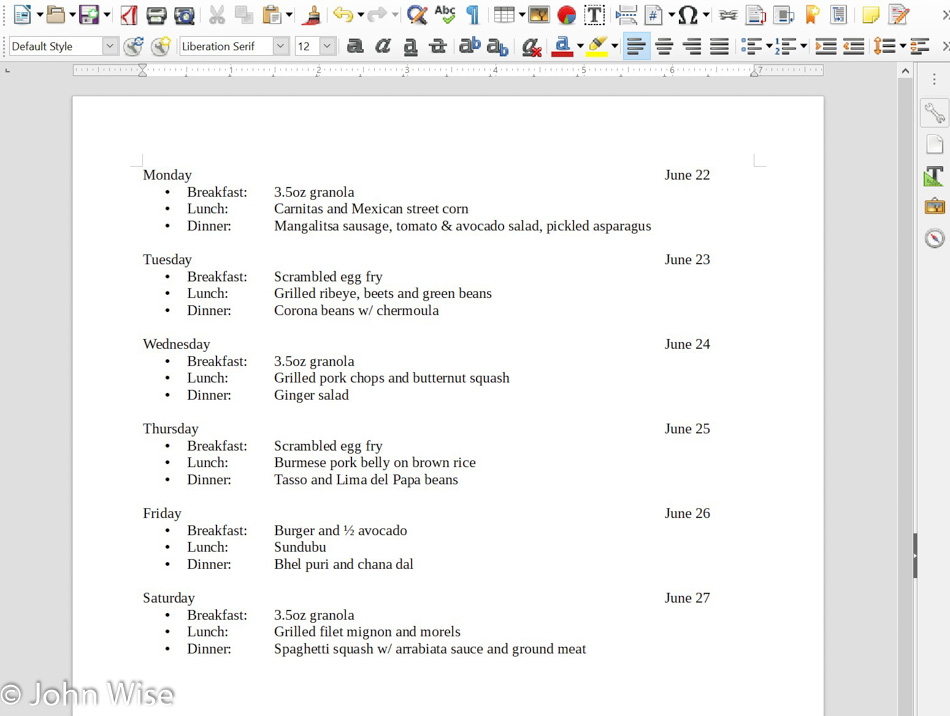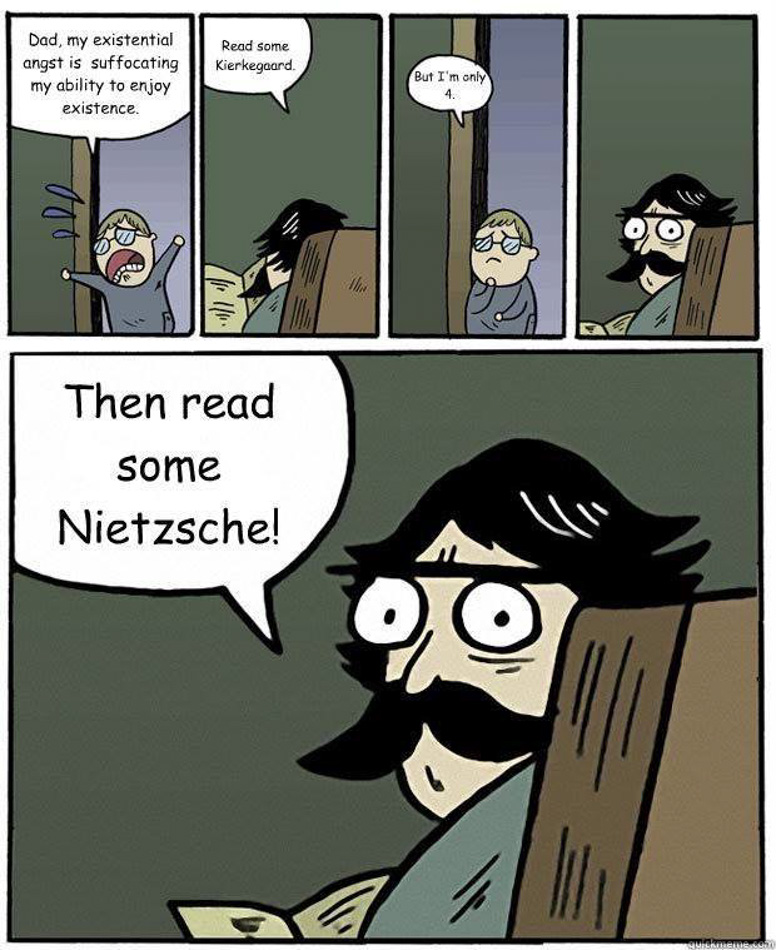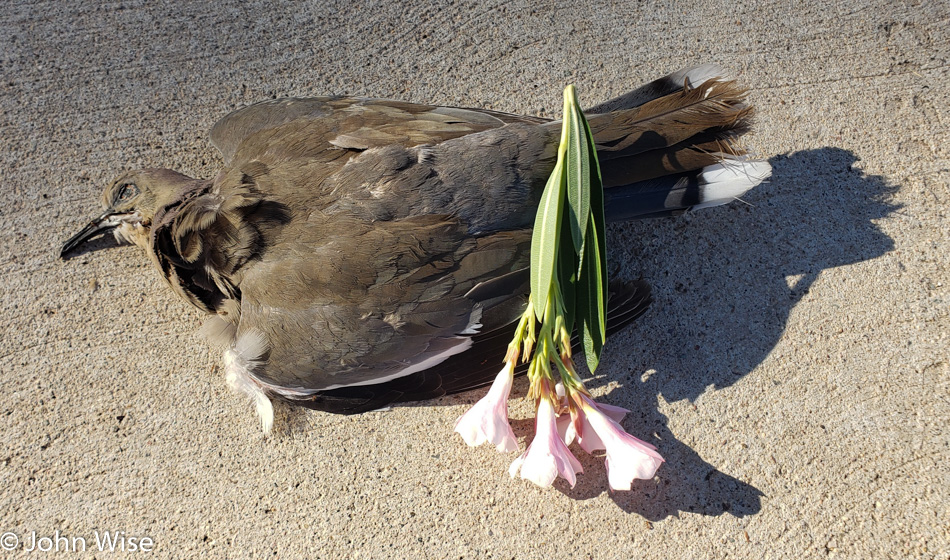
One hundred and ten days of self-isolation! I was hoping it wouldn’t be this long, but by now, I’m not going to be surprised when, at 220 days, I’ll be sharing a self-isolation update. “But what do dead birds, panties, and taco sauce have to do with self-isolation, John?” I hear you asking. Well, I’m happy you asked. You see, while Caroline and I were out on our early walk that starts the day, I had my bucket and grabber with me. The first 3/4’s of our walk was your normal stuff like plastic bottles, straws, rubber gloves, plastic bags, dead birds, single-use cups, lids, scraps of paper and candy wrappers, fast food bags, pieces of shit-stained toilet paper, napkins which also appear to have been used for public defecation, a couple of bags with dog feces, half-a-dozen empty mini-bottles mostly of Fireball cinnamon whisky, and aluminum cans. Those are the normal things.
On the last leg, we stumbled into an explosion of a homeless woman’s gear. However, I can’t be certain if this cache belonged to a homeless woman because how many homeless people would be traveling with a dozen pairs of panties? Not that any of them were big, but most would qualify as butt-floss. Whomever they once belonged to, they now belonged to the street. Being the dainty type they were strewn down the street for quite a ways. I’ve got to say that picking up clothes, rags, socks, and shoes on these litter collections is kind of grody. You see, I’ve picked things up that can elicit a deep retch when the smell of the thing is overpowering. You never want to look too close once the decision is made to eliminate the eyesore from public view, but you just know I had to inspect those women’s drawers. The first, second, and third pair after a quick glance, all looked fine. So much so that I started thinking that maybe somebody was moving and something fell from the vehicle until that one pair showed up I wished wasn’t in the clutch of my grabber. The ubiquitous thong, when worn during ovulation, does exactly what the euphemism says it will do: it flosses the folds below. That caked and dried goo was exactly what greeted my trained eye as the grabber moved them toward the bucket that was only an arms-length away from my face. Of course, at that moment, I wanted to throw my catch back into the stream of blowing underwear, but then I’d be littering, which would negate exactly what I was trying to do, and so those encrusted funky panties laid atop the rest of the trash until I could bury them below something else.
So, where does the taco sauce come in? I could tell you that what was in those underwear resembled taco sauce, but that would be too easy a pun to play. No, the taco sauce was found in a dozen packets in the street, just down the way from the panties. Strangely enough, while I do find lots of small plastic containers with those small snap-on plastic lids that Filiberto’s hands out and a lot of empty ketchup packets, I don’t find many mustard, mayonnaise, or taco sauce packets. When a bunch of unused taco sauce was obviously emergency-ejected from a passing car, one might wonder just what happened to the frantic minds in the car that panicked and had to rid the vehicle of all that still unopened taco sauce? It’s not like we ever find partial bottles of Fireball, half cans of beer, little baggies of white powder, or marijuana buds littering the street.
Enough about panties and taco sauce; this is an update here on Day 110 of Self-Isolation. A recap of some stuff: at 60 days, Arizona had 12,674 cases of COVID-19; at 90 days, we were at 34,600; and now, just 20 days after that, we are ripping right along at 87,425. Why is this? Our governor, in order to gain favor from Trump and company, went cowboy and unleashed the horde, and now the horde is releasing mayhem upon our hospitals. Personally, I’d love nothing more than for our healthcare workers across America to go on strike, demanding that every citizen, without exception, other than small children, be required to wear a mask. Nobody is asking people to wear a pair of these skanky panties I was picking up off the street, just a simple old mask for the 15 minutes or so they are in the store. Sadly, our rodeo clown culture is more interested in tempting fate of the Coronabull and is running around bareback. A meme has gone through the American illiterati that masks are harming people as though no one has worn a balaclava during the winter, nor have doctors and nurses worn masks in surgery.
Back to the numbers: Germany today had 503 new cases out of their population of 83 million, while Arizona, with a population of 7.3 million people, saw over 3,300 new cases. To me, this is the difference manifested by an educated populace on one hand and a citizenry made up of idiots on the other. This old song has been sung here far too many times, but to this day, I regularly speak with people who don’t recognize our shit situation nor understand or care to understand what the underlying causes could be. Many call it our desire for freedom; they kid themselves, it’s their comfort with mediocrity.
You wanna know something? I’d rather go find that nasty encrusted butt-floss and slap it over my face and squirt the taco sauce into my eyeballs rather than be surrounded by this cowboy culture of Johnny Badasses who want to show the world how toughening up will protect them and their families from a fake pandemic. It’s nearly comical when one looks at these fundamentalist patriots and their fatalistic outlook and contrasts their hysteria about masks and minor restrictions with their alleged understanding of democracy and freedom. I should have just shared my story about the panties, huh?
